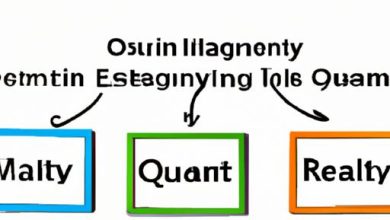Environmental Data Management Software: Streamlining Environmental Data Collection and Analysis

In today’s data-driven world, effective management and analysis of environmental data is crucial for organizations striving to make informed decisions and mitigate environmental risks. This is where environmental data management software comes into play. But what exactly is environmental data management software, and why is it so important?
Environmental data management software refers to a specialized tool that enables organizations to collect, organize, validate, and analyze vast amounts of environmental data efficiently. It provides a centralized platform for storing and managing environmental data, ensuring data integrity and reliability. This software plays a pivotal role in assisting companies, government agencies, and research institutions in understanding the impact of human activities on the environment, facilitating compliance with environmental regulations, and promoting sustainable practices.
Environmental data management software offers numerous benefits that streamline the entire data management process. By leveraging this software, organizations can effectively collect and organize environmental data while maintaining data quality and accuracy. With automated data collection and monitoring capabilities, organizations can reduce manual errors and improve the efficiency of data collection processes.
Moreover, environmental data management software empowers users to analyze and visualize data in real-time, providing valuable insights and facilitating data-driven decision-making. Through advanced reporting functionalities, users can generate comprehensive reports and share critical findings with stakeholders, enabling effective communication and informed action.
Intriguingly, the benefits of environmental data management software extend beyond data collection and analysis. By centralizing data storage and ensuring data integrity, organizations can streamline compliance processes and mitigate environmental risks. This software also enhances collaboration among teams by allowing seamless data sharing and access across departments, fostering a more holistic approach to environmental management.
Investing in environmental data management software is a proactive step towards efficient environmental data management. By leveraging the power of this software, organizations gain a competitive edge, improve sustainability practices, and contribute to a healthier planet. In the following sections, we will delve deeper into the key features, factors to consider, and successful case studies related to environmental data management software. Stay tuned to explore how this software can revolutionize your environmental data management practices.
Benefits of Environmental Data Management Software

Streamlined Data Collection and Organization
Managing environmental data manually can be a time-consuming and error-prone process. However, with the implementation of environmental data management software, organizations can streamline their data collection and organization efforts. This software provides automated data collection features, eliminating the need for manual data entry and reducing the risk of human errors. By capturing data directly from various sources, such as sensors, instruments, and monitoring equipment, organizations can ensure real-time and accurate data collection.
Furthermore, environmental data management software offers robust data organization capabilities. It allows users to categorize, tag, and organize data based on specific parameters and variables. This structured approach to data organization simplifies data retrieval and analysis, saving valuable time and resources. Whether it’s historical data or real-time measurements, environmental data management software ensures that data is readily accessible and well-organized for efficient decision-making.
Improved Accuracy and Reliability of Data
Data accuracy and reliability are paramount when it comes to environmental analysis and decision-making. Manual data collection and management processes are prone to human errors, leading to inaccurate results and flawed conclusions. However, environmental data management software minimizes such risks by automating data validation and quality control processes.
This software employs built-in algorithms and validation checks to ensure data accuracy and integrity. It detects anomalies, outliers, and inconsistencies to flag potential data errors, enabling users to identify and rectify issues promptly. With improved data accuracy, organizations can make confident decisions based on reliable and trustworthy information, supporting effective environmental management strategies.
Enhanced Data Analysis and Reporting Capabilities
Environmental data management software empowers organizations with advanced data analysis and reporting capabilities. Through sophisticated analytical tools and algorithms, users can uncover patterns, trends, and correlations within their environmental data. These insights enable organizations to identify potential risks, assess environmental impacts, and devise effective mitigation strategies.
Moreover, environmental data management software offers comprehensive reporting functionalities. Users can generate visually appealing reports, charts, and graphs, presenting data in a clear and understandable manner. These reports can be customized to meet specific requirements and shared with stakeholders, regulators, and other relevant parties. By effectively communicating data findings through intuitive reports, organizations can foster transparency, collaboration, and informed decision-making.
In the next sections, we will explore the key features that make environmental data management software indispensable and discuss essential factors to consider when choosing the most suitable software for your organization’s needs. Stay tuned to discover how this software can revolutionize your environmental data management practices.
Key Features of Environmental Data Management Software

In order to effectively manage environmental data, organizations need a robust software solution that offers a range of key features. Let’s explore some of the essential features that environmental data management software provides:
Data Integration and Centralization
Environmental data management software enables the integration and centralization of data from various sources. This feature allows organizations to consolidate data from different monitoring systems, sensors, and devices into a single platform. By centralizing data, users can access a comprehensive and unified view of their environmental data, simplifying data management and analysis.
Data Validation and Quality Control
Accurate and reliable data is crucial for effective decision-making. Environmental data management software incorporates data validation and quality control mechanisms to ensure the integrity of the collected data. Through automated validation processes, the software identifies and flags potential errors, inconsistencies, or outliers, allowing users to address these issues promptly. This feature helps maintain data accuracy and enhances confidence in the data analysis.
Automated Data Collection and Monitoring
Gone are the days of manually collecting and monitoring environmental data. Environmental data management software offers automated data collection and monitoring capabilities, significantly reducing the time and effort required for data collection. Through the integration with various data collection systems, such as remote sensors or IoT devices, the software automatically captures and records data at regular intervals. This automation not only improves efficiency but also minimizes the risk of human error.
Real-time Data Visualization and Reporting
Environmental data management software empowers users with real-time data visualization and reporting capabilities. This feature allows users to create interactive dashboards and visualizations, enabling them to explore trends, patterns, and anomalies in their environmental data. Real-time reporting functionality ensures that stakeholders have access to the most up-to-date information, facilitating timely decision-making and proactive environmental management.
With these key features, environmental data management software enables organizations to streamline their data collection, validation, and monitoring processes. The ability to centralize data, ensure data quality, automate data collection, and visualize real-time data enhances the effectiveness and efficiency of environmental data management. In the next section, we will delve into the factors that organizations should consider when selecting the most suitable environmental data management software for their needs.
Factors to Consider when Choosing Environmental Data Management Software
When selecting environmental data management software, several crucial factors should be taken into account to ensure the software aligns with your organization’s specific needs and goals. Let’s explore the key considerations that can guide your decision-making process:
Scalability and Flexibility
An ideal environmental data management software should be scalable, capable of accommodating the growing volume of data as your organization expands. It should also offer flexibility to adapt to changing data requirements and technological advancements. Ensure that the software can handle increasing data complexity without compromising performance.
Compatibility with Existing Systems and Data Formats
Efficient integration with your organization’s existing systems and data formats is paramount. The software should seamlessly interact with your current infrastructure, allowing for smooth data transfer and synchronization. Verify that the software supports common file formats and databases to avoid compatibility issues.
User-friendly Interface and Ease of Implementation
A user-friendly interface is essential for effective utilization of environmental data management software. Look for software that offers intuitive navigation, clear data visualization, and easy-to-use features. Additionally, consider the ease of implementation. The software should have a straightforward onboarding process to minimize disruptions and maximize productivity.
Security and Data Privacy Measures
Protecting sensitive environmental data is crucial to maintain confidentiality and comply with data privacy regulations. Prioritize software that offers robust security measures, such as data encryption, user authentication, and access controls. Additionally, ensure the software adheres to relevant data privacy standards, such as GDPR or CCPA, to safeguard your organization’s reputation and stakeholder trust.
By carefully considering these factors, you can make an informed decision when choosing environmental data management software. Remember that selecting the right software is a strategic investment that can significantly impact your organization’s environmental data management practices and drive sustainable outcomes.
Case Studies: Successful Implementation of Environmental Data Management Software
Real-world examples provide valuable insights into the benefits and outcomes of implementing environmental data management software. Let’s examine two case studies that highlight the positive results achieved by organizations:
Example 1: Company X’s Experience and Results
Company X, a leading environmental consulting firm, implemented environmental data management software to streamline their data collection and analysis processes. With the software’s automated data collection capabilities, they significantly reduced manual errors and improved data accuracy. The centralized platform allowed seamless collaboration among team members, enabling them to generate comprehensive reports and deliver actionable recommendations to clients promptly. As a result, Company X enhanced their reputation, increased client satisfaction, and achieved greater operational efficiency.
Example 2: Organization Y’s Positive Outcomes
Organization Y, a government agency responsible for environmental monitoring, adopted environmental data management software to centralize their vast amount of environmental data. The software’s scalability allowed them to handle the ever-increasing data volume, ensuring data integrity and accessibility. With real-time data visualization and reporting features, Organization Y gained valuable insights into environmental trends, enabling them to make data-driven decisions and implement targeted interventions. As a result, they successfully mitigated environmental risks, improved compliance with regulations, and positively impacted the local ecosystem.
These case studies demonstrate the transformative power of environmental data management software in driving sustainable outcomes. By leveraging this software, organizations can unlock the full potential of their environmental data and make informed decisions that positively impact the environment.
Conclusion
In conclusion, environmental data management software is a game-changer for organizations seeking to effectively manage and analyze their environmental data. By using this specialized software, companies, government agencies, and research institutions can streamline their data collection, organization, and analysis processes, leading to more informed decision-making and improved environmental outcomes.
The importance of environmental data management software cannot be overstated. It enables organizations to centralize and integrate their environmental data, ensuring its accuracy and reliability. With automated data collection and monitoring capabilities, organizations can reduce the risk of manual errors and improve data quality. Real-time data visualization and reporting features empower users to gain valuable insights and communicate critical findings with stakeholders.
When choosing the right environmental data management software, several factors should be considered. Scalability and flexibility are crucial to ensure that the software can handle increasing amounts of data and adapt to evolving organizational needs. Compatibility with existing systems and data formats is another essential factor, as it allows seamless integration with current data sources and eliminates the need for extensive data conversion.
A user-friendly interface and ease of implementation are also key considerations. The software should be intuitive and easy to navigate, enabling users to quickly adopt and leverage its full potential. Additionally, robust security and data privacy measures should be in place to protect sensitive environmental data from unauthorized access or breaches.
Successful implementation of environmental data management software has been observed in various organizations. For instance, Company X experienced significant improvements in data accuracy and analysis efficiency after adopting this software. Organization Y achieved positive outcomes in compliance reporting and stakeholder engagement. These case studies demonstrate the tangible benefits of leveraging environmental data management software in real-world scenarios.
In conclusion, environmental data management software offers a comprehensive solution for organizations to effectively manage their environmental data. By harnessing the power of this software, organizations can enhance their environmental management practices, promote sustainability, and contribute to a healthier planet. Consider implementing environmental data management software today and unlock the full potential of your environmental data. Join WEEKLY NEWS in revolutionizing environmental data management practices!
Conclusion: So above is the Environmental Data Management Software: Streamlining Environmental Data Collection and Analysis article. Hopefully with this article you can help you in life, always follow and read our good articles on the website: WEEKLY NEWS




